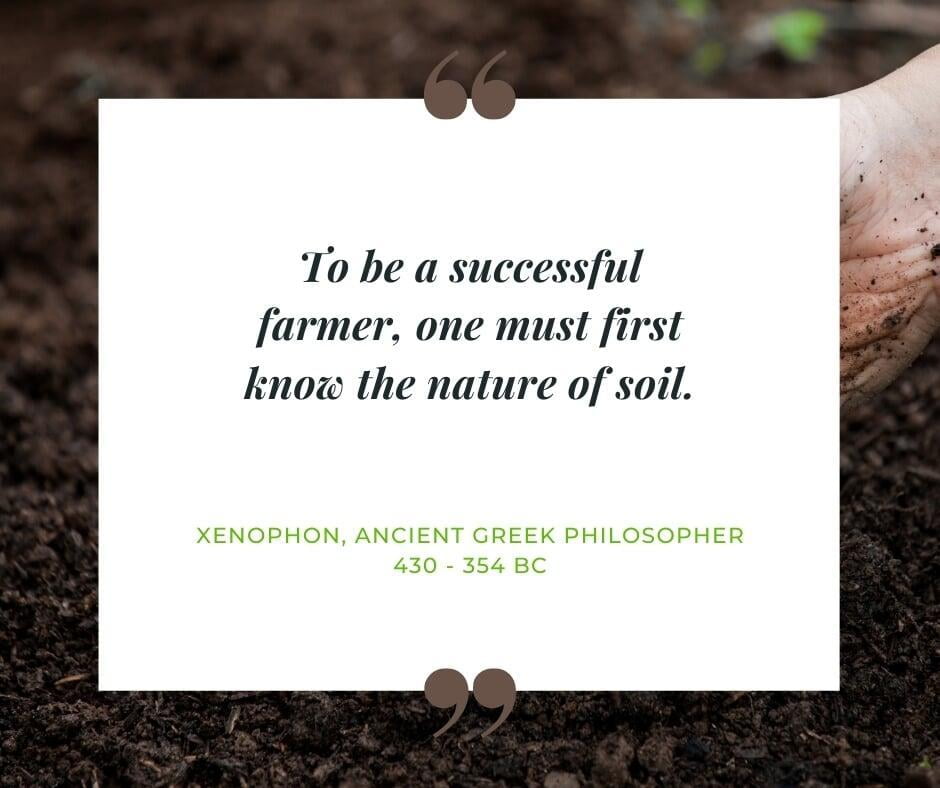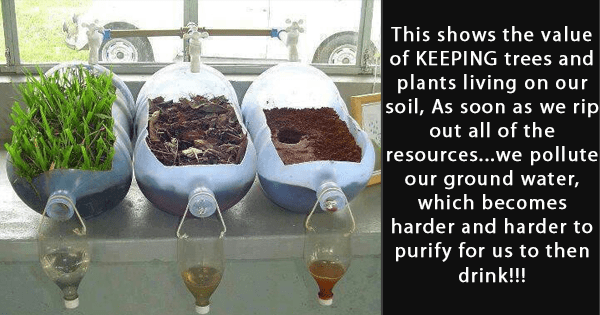
As gardeners, many of us are familiar with getting our hands dirty. But how much do you really know about the soil that provides life to our gardens? I’ve shared some fun facts here in hopes that you will learn something, and maybe even develop a greener thumb because of it.
When planning our gardens, soil is often overlooked even though it is the foundation for success.
How much did you know about soil?
Share your comments at the bottom!
Dirt is not Soil.
Although many of us may use the words dirt and soil interchangeably, they are not the same thing. Dirt is often made of clay, sand, silt, and rocks, with no beneficial nutrients or microbes. When you add water to dirt it doesn’t easily clump together. We cannot grow plants with dirt.
When soil becomes displaced we call it dirt. Therefore, we work with “soil” in the garden, and then wash the “dirt” from our hands when we go inside.
Soil is a living system.
Soil is a natural body made up of minerals, air, water, organic matter, and living organisms. There are more microorganisms in a handful of soil than there are people on earth, and these make up a microbiome. Soil also has bacteria, fungi, worms, and insects that feed on plant tissues, breaking them down into nutrients that plants can absorb.
Soil is at the bottom of the food chain.
Soil is the pillar of life on earth. It provides nutrients for the plants, bacteria, and other micro-organisms, soil is the very foundation of our food chain. Without it, the intricate web of consumption would not be possible. Without plants there would not be animals.
We not only rely on plants as food ourselves, but also to provide shelter and our way of life. Without soil and plants, we would not have access to medicines and fuel. Without trees, we would not have wood for fire, paper, and houses.
Soil can die.
Like all living things, soil can also die. When soil is cut off from its ecosystem, it becomes dirt. Excessive tilling, erosion, depletion, and overuse of chemical pesticides or fertilizers damage the soil’s ecosystem. And remember, when soil is depleted of its organic matter it will turn back into dirt.
Soil is a non-renewable resource.
This is perhaps the most surprising fact on the list, and you might wonder how that can be possible. Wood is considered a renewable resource because we can regrow trees, so how is it possible that soil – the very thing that trees grow from – is not renewable?
To be considered a renewable resource, we must be able to recover the resource within a human lifespan. To develop an inch of topsoil can take more than 500 years. While it is true that we can improve the soil in our home gardens by adding compost, nutrients, and fertilizers, this is not something that can be done effectively on a large scale. It is important for us to protect our soil and agricultural lands with good practices for sustainable soil management.
Soil can impact air quality.
Well-managed soil can take a ton of carbon out of the atmosphere. In addition to being a beneficial part of our ecosystem, soils can supply and retain nutrients such as nitrogen, phosphorus, and sulfur. On the flip-side, mistreated soil can also create an immense amount of carbon emissions.
Soil cleans our water.
In fact, soil is the world’s biggest water filter. As water passes through the ground it is cleaned through physical, chemical, and biological processes. Good-quality soil can filter our pollutants and purify water, keeping our environments and our people healthy.

Soil is vulnerable.
What Now?
Now that you know how important soil is, you might be wondering what you can do to improve the soil in your gardens. Watch for our post next week on improving your garden soil!
For now, here are a few tips:
· Rotate crops to reduce nutrient deficiencies
· Use vegetation to protect soil in your yards
· Increase organic matter in soil through compost, manure, ground egg-shells, and shredded leaves
· Test your soil to see what it needs before using fertilizers
Thank you for reading today! I hope you have learned something, and will join us in the preservation of our precious soil. Even just taking better care of the soil in your garden and sharing these interesting facts with others will make a difference.
Our growing population is like a double-edged sword to our delicate ecosystem. Using more land for housing AND increasing the demand for food-production. Conservation efforts would be wise to focus on the ever-humble soil that supports every part of our lives.
See you next week for tips on enriching the soil in your garden!
More Resources.
If you would like to learn some more, this is a short list of resources to get you started:
Infographic: Soil is a non-renewable resource by the Food and Agriculture Organization of the United Nations.
Article: Forest vegetation plays an important role in protecting water quality by Mike Schira with the Michigan State University Extension. This 3-minute video talks about protecting water with plants.
Short Video: “April: Soils Clean and Capture Water” with Jim Toomey from the Soil Science Society of America will teach you about the different ways soil cleans water.
Long Video: “Soil, Not Dirt: A Digital Journey Connecting Soils, Plants, and Climate” by Rebecca Lybrand, a pedologist at the University of Arizona. This 19-minute video studies how soil is part of the eco-system in a variety of climates.
Website for Kids: https://www.soils4kids.org/ is by the Soil Science Society of America and has a variety of resources such as games, experiments and articles for grades K – 12.
